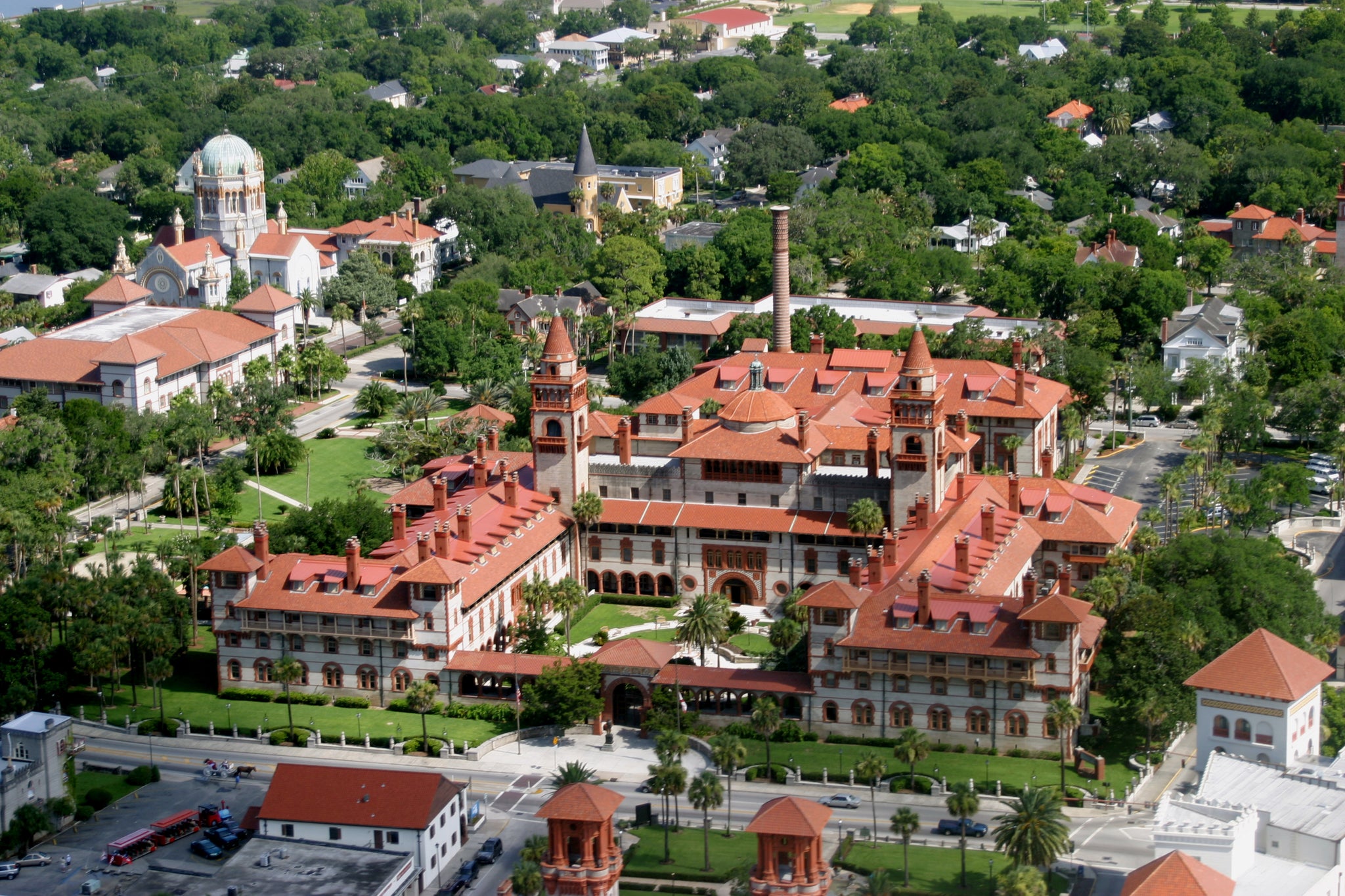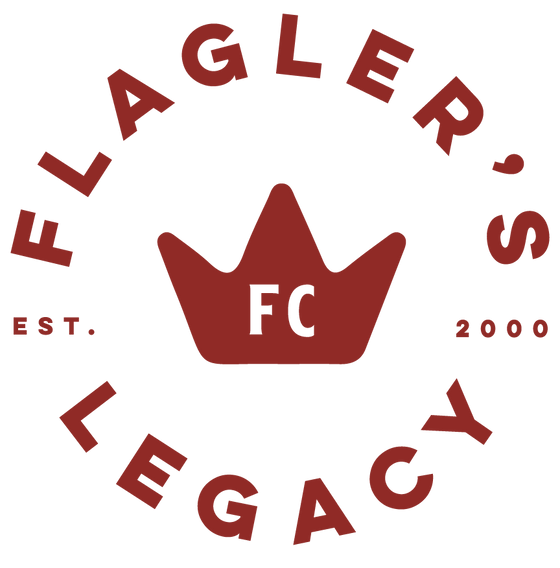HISTORIC VIRTUAL TOURS

While our Flagler’s Legacy - Historic Tours of Flagler College are on hold for 2020, please enjoy a virtual tour of the opulent former Hotel Ponce de Leon, now home to Flagler College.
Henry Flagler gained his fortune in the grain industry and then partnered with John D. Rockefeller to start Standard Oil. In the late 1800s, Henry Flagler came to St. Augustine with his first wife to help with her ailing health. When Henry arrived, he saw great potential in the small town of St. Augustine. He extended the railroad from Jacksonville to St. Augustine and started to build luxury hotels. The first of which was the Hotel Ponce de Leon, the playground for the rich and famous of the time.
In 1885, construction started at the Hotel Ponce de Leon and finished in just 18 months. The Ponce official opened January 12, 1888. It was a seasonal hotel opening only from January to Easter. There were approximately 450 hotel rooms, and it cost $4,000 to stay for the entire season. Guests were required to pay to stay for the entire season, whether they stayed that long or not.
In 1968, the former Hotel Ponce de Leon opened as the centerpiece to Flagler College. More information about the Hotel Ponce de Leon can be found in Hotel Ponce de Leon: The rise, fall, and rebirth of Flagler’s Gilded Age Palace by Dr. Leslee Keys. (If you wish to buy a copy for yourself, please follow this link: https://bit.ly/3aviPF4c)
FLAGLER COLLEGE COURTYARD
Construction on the Hotel Ponce de Leon started in 1885 when Henry Flagler hired two young architects, fresh out of college, to design his building. Their names were John Carrère and Thomas Hastings. The Ponce was the very first public building worked on together. The construction of the Ponce was built in a revolutionary manner of poured concrete. It also boasted state of the art amenities for the late 1800s- which included running water and electricity. The fountain located at the center of the courtyard is not only beautiful but also functional- it was used to aerate water for hotel guests. If you look to the sky, the Ponce’s prominent towers once held thousands of gallons of water; today, these towers now celebrate the top of each hour with a different instrumental song.
ROTUNDA
The Rotunda is an opulent lobby greeting all guests when arriving at the Ponce. Materials featured in the lobby include Numidian pink marble wainscoting, oak wainscoting and woodwork, and Italian mosaic tile floors. The Rotunda’s most defining feature is the octagonal inset central dome, framed by eight carved oak caryatids. Henry Flagler spared no expense for the details of his beautiful luxury hotel, featuring murals by George W. Maynard, electric lights wired by Thomas Edison, and detailed woodwork supervised by Bernhardt Maybeck.
SOLARIUM Above the lobby and immediately under the Rotunda’s dome is the 400 Rotunda, now called the Solarium. The Solarium is a rectangular space of 2,500 square feet. When first opened, this space was used as childcare for guests. Once it was realized that the room was underutilized, childcare moved to the ground floor, and this space converted to lounge space. Hotel guests would take advantage of the 360 views of the city of St. Augustine available from the two roof terraces. In 2013, a complete renovation of the Solarium was completed for the 450th birthday of the City of St. Augustine. DINING HALL Considered the most remarkable room, the Hotel Ponce de Leon’s Dining Room is 14,212 square feet with a forty-eight-foot barrel-vaulted ceiling and includes semicircular east and west venidos. The Dining Room once held 300 seated guests; each table having their own waiter for the duration of their stay. In this room, there are forty Louis Comfort Tiffany stained glass windows, featuring clear and colored glass in geometric patterns and filigree designs. Also, the barrel-vaulted ceiling features additional allegorical females and murals by George W. Maynard. Famous guests of the Hotel Ponce de Leon Dining Room included John D Rockefeller Jr., John Jacob Astor, and Presidents Grover Cleveland, Theodore Roosevelt, Warren G. Harding, and Lyndon B. Johnson. FLAGLER ROOM To the west of the Rotunda, through a pair of carved oak doors, leads to the delicate and elaborately painted Grand Parlor (now the Flagler Room). Initially planned as a pleasant refuge for ladies staying at the Ponce, the delicate French Renaissance décor departs from the Spanish themes employed throughout the rest of the building, decorated with many of original artifacts from the Hotel Ponce de Leon, including furniture that may have come from Pottier & Stymus of New York. The Steinway piano in the Flagler Room pays homage to the original Henry Flagler purchased for the Parlor that guests or a member of the hotel orchestra might have played from time to time. SOURCES CITED Keys, L. (2015) Hotel Ponce de Leon: The Rise, Fall, and Rebirth of Flagler’s Gilded Age Palace. Gainesville, FL. University Press of Florida.



